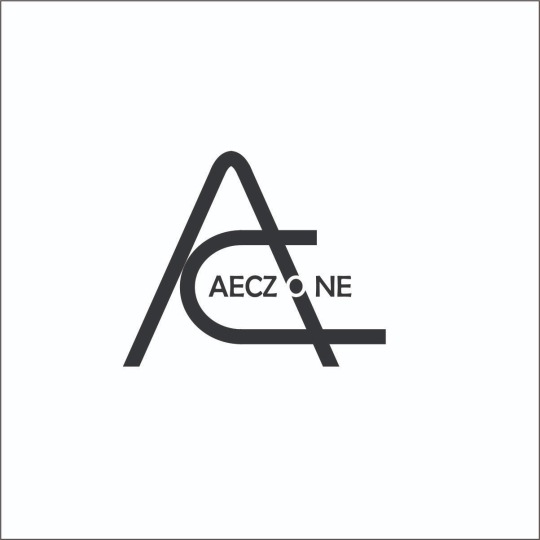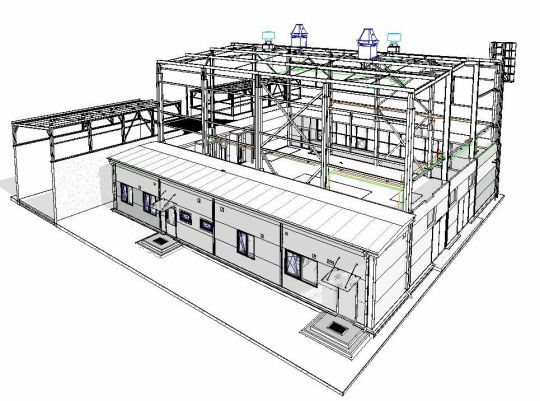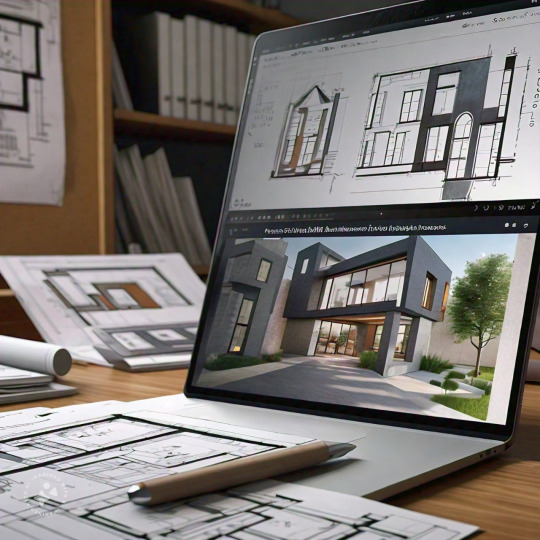#BIM (Building Information Modeling) software
Explore tagged Tumblr posts
Text
Best BIM Tools in 2025 and Selecting the Right BIM Software

BIM is a comprehensive approach in the AEC realm, and its applications and tools hold a significant position. It is vital to choose the right BIM software for project requirements, coordination, and efficiency. Here’s a detailed, curated list of the best BIM software and key factors for selecting it.
#bim modeling services#3d bim services#mep shop drawings#building information modeling#interior visualization#clash detection#revit families creation#3d cad drawings#shop drawing services#bim company#top bim software#best bim tools
2 notes
·
View notes
Text

BIM Software Learning | BIM Certificate Programs- Aeczone Academy
#architecture#certificate in building information modelling#online bim certificate programs#learn bim online#bim classes#bim architecture course#bim certification courses#bim course with placement#bim modeling course#building information modeling course#bim engineer course#bim learning online#bim software learning
3 notes
·
View notes
Text
How Architectural Bim Services Streamline Building Design

Don’t you have any idea about how Architectural BIM Services USA made huge changes. Here you go. In this rapidly evolving architecture, engineering, and construction industry, there is a huge demand for promising work. Those who complete the project with precision, efficiency, and collaboration are always welcome.
#Architectural BIM Services USA#Bim Service Providers#Architectural Bim Services#Structural Bim Services#Mepf Bim Services#Infrastructure Landscape Mepf#4D Bim Software#5D Quantity Take-Off#Building Information Modelling 6D#7D Bim Asset Management Company#Point Cloud To Bim Conversion#Cad To Bim Modeling Services#Construction Documentation Checklist#Cobie Service India#Bim For Facility Management#Structural Precast Modelling#Revit Fabrication Service India#Bim Consulting Services India#Bim Implementation Service India#Bim Documentation Service#Bim Execution Planning Guide
0 notes
Text
BIM Software Solutions for Modern HVAC Applications
As the HVAC industry continues to evolve in 2025, Building Information Modeling (BIM) has become an indispensable tool for professionals seeking to optimize design, installation, and maintenance processes. For HVAC engineers, contractors, and technicians, selecting the right BIM software can significantly impact project efficiency and outcomes. Let’s explore the most effective BIM solutions for…
#3D modeling#augmented reality#Autodesk Revit#automation#Bentley AECOsim#BIM#BIM workflows#building information modeling#Building performance#building systems#clash detection#cloud collaboration#cooling loads#decision matrix#digital twin#duct design#energy analysis#Energy efficiency#fabrication documentation#Graphisoft ArchiCAD#heating loads#hvac#HVAC design software#HVAC engineering#interoperability#mechanical engineering#mechanical systems#MEP#MEP coordination#mixed reality
0 notes
Text
#revit bim software#bim software#building design#autocad#navisworks#tekla#bim software list#building information modeling services
0 notes
Text
Top 05 Future Trends in BIM Clash Detection Software

Clash detection is one of the most critical steps teams can take to identify and address potential design conflicts before construction begins. This proactive approach helps to prevent issues and avoid costly rework during the construction process.
While clash detection has been used for some time, it can be done manually by reviewing design drawings or using lightbox overlays. However, the introduction of Building Information Modeling (BIM) tools has significantly improved the ease and accuracy of this process.
As a result, BIM clash detection has become the standard practice in commercial construction, and it is implemented during the earliest stages of design and preconstruction.
Building Information Modeling (BIM) has become a cornerstone of modern construction practices, enabling architects, engineers, and contractors to collaborate more effectively. One of the most significant advancements within this realm is BIM clash detection software, which helps identify and resolve conflicts between various design elements before construction begins. As we look toward the future, several key trends are emerging that promise to enhance the capabilities and effectiveness of BIM clash detection software.
Learn more: https://blog.prototechsolutions.com/top-05-future-trends-in-bim-clash-detection-software/
#BIM Clash Detection Software#Clash Detection#Clash Detection Software#BIM Clash Detection#Navisworks#Autodesk#BIM#Building Information Modeling#Mechanical#Electrical#Plumbing
0 notes
Text
Know how using Building Information Modeling (BIM) Software to accelerate the design process by maintaining constant communication and collaboration.
#Building Information Modeling Software#Building Information Modeling#BIM#Engineering Firms#BIM Software#BIM Software Development Company#Software Development Company#Software Development#BIM Software Development Services
0 notes
Text

UTwin è un fornitore di una soluzione software proprietaria per la gestione degli edifici tramite il Building information Modeling (BIM) che supporta i proprietari di edifici e gli operatori di asset a gestire i dati in modo più intelligente e collaborativo grazie ai gemelli digitali. La nostra tecnologia può ottimizzare i processi di gestione degli edifici, migliorare l'efficienza e ridurre i costi di gestione delle strutture. visitare il sito https://www.utwin.it/
#building information modeling#digital twin software#software development#digital twins#software#bim
0 notes
Text
BIM -Building Information Modeling |Revolutionizing Construction
BIM, or Building Information Modeling, transforms construction and engineering projects by integrating data for planning, design, construction, and management. This comprehensive approach improves project visualization and coordination, making decision-making easier and reducing risks. In this blog, we’ll delve into the essential software components of BIM, including 3D modeling, data management,…
#applications of BIM#Benefits of BIM#BIM#BIM model#BIM objects#Building information modeling#construction#Future trends in BIM#what is bim software?
1 note
·
View note
Text

Building Smarter with BIM Technology
Building Information Modeling Companies like us, Modulus Consulting, are revolutionizing the AEC industry. We are renowned for our commitment to quality, precision, and client satisfaction. As one of the Top BIM Service Companies, we provide comprehensive solutions tailored to your specific needs, pushing the boundaries of what's possible with 3D modeling technology.
#BIM 360 Model Coordination#Building Information Modeling Services#Top Bim Service Companies#3D BIM Modeling#3D BIM Modelling Services DC#Reality Capture Software#AEC BIM Services
0 notes
Text
Exploring the Diverse Landscape of BIM Software in Construction: A Comprehensive Guide
Introduction: In the ever-evolving field of construction, Building Information Modeling (BIM) has emerged as a transformative technology that revolutionizes the way buildings are designed, constructed, and managed. BIM software plays a pivotal role in enhancing collaboration, improving efficiency, and minimizing errors throughout the construction process. This article delves into the various…

View On WordPress
#architectural design software#as-built documentation#BIM model accuracy#BIM software#Building Information Modeling#collaboration platforms#construction industry advancements#construction management software#construction project efficiency#Construction Technology#cost estimation tools#facility maintenance optimization#facility management solutions#laser scanning technology#LiDAR applications#MEP systems modeling#point cloud integration#project stakeholders collaboration#real-time coordination#structural engineering tools#sustainable building practices
0 notes
Text
How Civil Engineering Courses Are Evolving with New Technology
Civil engineering is no longer just about bricks, cement, and bridges. It has become one of the most future-focused fields today. If you are planning to study civil engineering, you must understand how the course has evolved. The best civil engineering colleges are now offering much more than classroom learning.
You now study with technology, not just about it. And this shift is shaping your career in ways that were never possible before.
Technology is Changing the Civil Engineering Classroom
In the past, civil engineering courses relied on heavy theory and basic field training. Today, you learn through software, simulations, and smart labs. At universities like BBDU in Lucknow, classrooms are powered by tools like AutoCAD, Revit, STAAD Pro, and BIM.
These tools help you visualize structures, test designs, and even simulate natural forces.
You work on 3D modeling tools
You test designs virtually before real-world execution
You understand smart city layouts and green construction methods
This means your learning is hands-on, job-ready, and tech-driven.
You Learn What the Industry Actually Uses
Most construction and infrastructure companies now depend on digital tools to plan, design, and execute projects. This is why modern B.Tech Civil Engineering courses include:
Building Information Modelling (BIM)
Geographic Information Systems (GIS)
Remote Sensing Technology
Drones for land surveying
IoT sensors in smart infrastructure
Courses in colleges like BBDU include these topics in the curriculum. You do not just learn civil engineering. You learn the tools that companies expect you to know from day one.
The future of Civil Engineering is Data-Driven
You might not think of civil engineering as a data-heavy field. But now, big data is used to monitor structural health, traffic flow, and resource planning. Many universities have added data analysis and AI basics to help you understand how smart infrastructure works.
By learning how to handle real-time data from buildings or roads, you become more skilled and more employable.
Real-world exposure is Now Part of the Course
Good civil engineering colleges in Uttar Pradesh understand that you need industry exposure. Colleges like BBDU offer:
Internships with construction firms and government bodies
Industry guest lectures and site visits
Capstone projects linked to real problems
You are not just attending lectures. You are solving real-world construction challenges while still in college.
Why Choose BBDU for Civil Engineering?
In Lucknow, BBDU is one of the few private universities offering a modern civil engineering course with world-class infrastructure. You learn in smart labs, access tools used by top firms, and receive career counseling throughout the program.
Here’s what makes BBDU a smart choice:
Advanced labs and smart classrooms
Training in AutoCAD, STAAD Pro, BIM
Live projects and on-site construction learning
Career cell and placement support
Affordable fees and scholarships for deserving students
Civil Engineering is Still One of the Most Stable Careers
Reports show that India will spend over ₹100 lakh crores on infrastructure in the next few years. Roads, smart cities, renewable power plants, metros – all need civil engineers. And companies prefer students trained in construction technology, digital tools, and real-world planning.
So, if you're thinking about joining a course, look at how it prepares you for tomorrow.
The future of civil engineering is digital, and your education should be too. Choose a program that keeps up with the times. Choose a university that helps you build more than just buildings – it helps you build your future.
Apply now at BBDU – one of the most future-focused civil engineering colleges in Uttar Pradesh.
2 notes
·
View notes
Text
Planning and estimating construction projects are crucial to their success. There are many complex processes involved. As part of this process, construction takeoffs are essential. Construction takeoffs are itemized and quantified lists of the materials, labor, and other resources required for construction projects.
Construction takeoffs are essential to project estimation, planning, and success in general. They give a thorough analysis of the necessary labor, materials, and resources, allowing for precise cost estimation and efficient project management. With enhanced accuracy and time savings, the process has been further streamlined with the introduction of digital takeoff tools and BIM-based solutions.
Importance of Construction Takeoffs
Accurate project estimation
Accurate project estimation is built on the foundation of construction takeoffs. Takeoffs give project stakeholders a thorough grasp of the project scope and associated costs by estimating the materials, equipment, and labor required. Realistic timetables and budgets can be created with the use of this information.
Enhanced project planning
A crucial aspect of project planning is takeoffs. Construction teams may create accurate project timetables, manage resources wisely, and spot potential bottlenecks or areas that need extra care with a full assessment of the available resources. This degree of planning ensures that the construction process runs more smoothly and helps to avoid delays and expensive change orders.
Improved communication and collaboration
Communication among project stakeholders is standardized by construction takeoffs. Takeoffs allow for simple and clear communication between architects, contractors, suppliers, and other team members by quantifying and clarifying requirements. This promotes teamwork and increases overall project efficiency by cutting down on ambiguity and errors.
Methods for Construction Takeoffs
Manual takeoffs
Traditional manual takeoffs entail looking at blueprints, plans, and specifications to manually calculate the amount of resources and materials needed. Even though it takes a lot of time and is prone to mistakes, this method is still employed occasionally, especially for smaller projects or when digital versions of certain details are not available.
Digital takeoff software
The building sector has undergone a change since the introduction of digital takeoff software. By eliminating laborious computations and lowering human error, these software solutions allow users to electronically measure quantities directly from digital designs. Software for digital takeoffs streamlines the process by providing features like annotation tools, automatic measurements, and simple cooperation.
3D modeling and BIM
The building sector has undergone a change since the introduction of digital takeoff software. By eliminating laborious computations and lowering human error, these software solutions allow users to electronically measure quantities directly from digital designs. Software for digital takeoffs streamlines the process by providing features like annotation tools, automatic measurements, and simple cooperation.
Read more
3 notes
·
View notes
Text

Building Information modeling (BIM) is an clever software program modeling procedure that engineers, contractors, and designers can use to collaborate on a building’s layout, construction, and operation. It’s extra than just a version. It’s a method of gathering and handling facts at some stage in a building’s whole existence cycle.
BIM encompasses not simplest geometry and spatial relationships, however it also files constructing features, together with unique statistics about the sort of materials used, the quantity used, and the way the ones characteristics effect the building as a whole. BIM may be thought of as a database of facts ranging from task substances and cost – to the 3D version after construction – to operation of the facility. This records may be used to actively control a task each step of the way.
2 notes
·
View notes
Text
Revit Architecture Online Training - cubikcadd

Revit Architecture Online Training - cubikcadd
In today’s fast-paced design and architecture world, staying ahead of the curve requires mastering the right tools. One of the most powerful and widely used software platforms for architects, engineers, and construction professionals is Autodesk Revit. If you’re serious about elevating your skills and advancing your career, enrolling in a Revit course can be a game-changer. This blog will explore the benefits of taking a Revit course, what you can expect to learn, and why it's essential for anyone in the design industry.
What Is Revit?
Revit is a Building Information Modeling (BIM) software developed by Autodesk that allows architects, engineers, and construction professionals to design, visualize, and manage building projects in a 3D environment. Unlike traditional CAD software, Revit is more than just a drawing tool. It enables users to create intelligent models with real-world information about materials, structures, and systems, providing a holistic approach to design and construction.
Why Take a Revit Course?
A Revit course is crucial for professionals who want to maximize their productivity and accuracy in design. Here are a few key reasons why learning Revit is a smart investment in your future:
1. Industry Standard
Revit is an industry-standard BIM software widely used in architectural firms, engineering companies, and construction projects worldwide. Employers often seek professionals proficient in Revit, making it a valuable skill on your resume.
2. Improve Design Efficiency
Revit allows you to work smarter, not harder. By learning how to use the software’s advanced features, such as parametric modeling and automatic updates across the project, you can significantly reduce the time spent on revisions and manual updates.
3. Enhance Collaboration
Revit supports team collaboration with ease. A Revit course will teach you how to work with cloud-based models, enabling multiple users to access, modify, and update a single project file in real-time. This is especially important in large projects where coordination between different disciplines (architecture, structural engineering, MEP) is crucial.
4. Create Detailed 3D Visualizations
One of the standout features of Revit is its ability to generate highly detailed 3D models and visualizations. By enrolling in a Revit course, you’ll learn how to create photorealistic renders, walkthroughs, and simulations, helping you and your clients better understand the design before construction even begins.
5. Better Project Management
Revit’s intelligent data system ensures that every part of your model is interconnected. This allows for accurate cost estimates, material takeoffs, and construction timelines. A Revit course will show you how to use these tools to improve project management, ensuring projects stay on time and within budget.
What Will You Learn in a Revit Course?
From basic to advanced, a well-designed Revit course usually covers a wide range of topics. The following summarises what you can anticipate learning:
1. Introduction to BIM and Revit Interface
You’ll start by getting familiar with BIM concepts and the Revit interface. This includes learning about tools, menus, and how to navigate the software efficiently.
2. Modeling Techniques
The course will teach you how to create accurate architectural models, including walls, floors, roofs, doors, and windows. You’ll also learn how to model structural components and MEP systems, depending on the course's focus.
3. Documentation and Annotations
Learn how to generate construction documentation, such as floor plans, sections, elevations, and details. You’ll also cover how to annotate your drawings with dimensions, text, and other symbols necessary for clear communication with contractors and clients.
4. Advanced Modeling and Customization
Once you master the basics, you’ll dive into more advanced topics such as custom family creation, curtain wall systems, complex roofs, and parametric design, which allows you to create flexible models.
ph : +91-9500024134
Visit our website: https://www.cubikcadd.in/revit-training-in-coimbatore.html
Ramnagar Branch, Coimbatore : https://maps.app.goo.gl/boAyupUoqtda9fXU6
Saravanampatti Branch, Coimbatore : https://maps.app.goo.gl/xrtknmSk76d8cnQV9
OMR Branch, Chennai : https://maps.app.goo.gl/HCpHhcFHGdKsPCPx7
Facebook: https://www.facebook.com/cubikcadd
Instagram: https://www.instagram.com/cubikcadd/
Tiwtter: https://x.com/CubikCadd
2 notes
·
View notes
Text
From 2D to BIM: Upgrading Your Architectural Design Process
Are you still stuck in the 2D era?
Upgrade your architectural design process to the cutting-edge technology of Building Information Modelling (BIM). This game-changing innovation is transforming the architecture industry, and it's time to join the revolution.
The Limitations of 2D Design
Traditional 2D architectural design has served us well, but it's time to acknowledge its constraints. 2D designs lack the depth and detail required for modern construction projects. if it's fail to provide a comprehensive understanding of the building's components, leading to errors, miscommunications, and costly rework.
Lack of Clarity: 2D designs can be ambiguous, leading to misunderstandings and misinterpretations.
Inadequate Visualization: 2D designs struggle to convey complex spatial relationships and design intent.
Inefficient Collaboration: 2D designs make it challenging for stakeholders to collaborate and communicate effectively.
Error-Prone: 2D designs are more susceptible to human error, leading to costly rework and delays.

Enter BIM: The Future of Architectural Design
BIM is more than just a design tool – it's a collaborative platform that unifies architecture, engineering, and construction professionals. With BIM, you can create detailed, data-rich models that simulate real-world performance. This revolutionary technology enables:
Improved Collaboration: Stakeholders can access and contribute to the design process in real-time, ensuring everyone is on the same page.
Enhanced Visualization: 3D models and simulations facilitate better understanding and communication, reducing errors and miscommunications.
Increased Accuracy: Automated clash detection and interference checking minimize errors, ensuring a more efficient design process.
Efficient Project Management: Real-time tracking and analysis streamline the construction process, reducing delays and cost overruns.
Seamless Transition with Architectural BIM Services
Upgrading to BIM doesn't mean starting from scratch. Our expert Architectural BIM Services will guide you through a seamless transition, leveraging your existing designs to create rich, data-driven models. Our comprehensive services include:
Architectural BIM Modeling: Transforming 2D designs into detailed, interactive 3D models, enabling enhanced visualization and collaboration.
Architecture CAD Drawing: Converting traditional CAD files into BIM-compatible formats, ensuring a smooth transition.
Architectural 3D Modeling Services: Creating immersive, photorealistic visualizations, enhancing design communication and stakeholder engagement.
Architectural 3D Rendering Services: Generating stunning, high-resolution images and animations, perfect for marketing and presentation purposes.
Benefits of BIM
Enhanced Creativity: Explore new design possibilities with data-driven models, unlocking innovative solutions.
Improved Productivity: Streamline your workflow with automated processes, reducing design time and costs.
Increased Competitiveness: Stand out with cutting-edge technology and innovative solutions, attracting clients and projects.
Better Decision-Making: Data-driven models enable informed decisions, reducing risks and improving project outcomes.
Sustainability: BIM facilitates sustainable design, reducing environmental impact and promoting green building practices.
Implementing BIM in Your Practice
Upgrading to BIM requires a strategic approach. Here's a step-by-step guide to ensure a smooth transition:
Assess Your Current Workflow: Identify areas for improvement and determine the best approach for your practice.
Choose the Right BIM Software: Select a software that aligns with your needs and skill level.
Train Your Team: Invest in comprehensive training to ensure a seamless transition.
Develop a BIM Execution Plan: Establish clear goals, processes, and standards for your BIM implementation.
Start Small: Begin with a pilot project to test and refine your BIM workflow.
The architectural design process is evolving, and BIM is leading the charge. Don't let outdated design processes hold you back. Embrace the future of architecture with our expert BIM services. Discover the advantages of enhanced creativity, improved productivity, and increased competitiveness. Join the BIM revolution today and transform your architectural design process. Contact us to learn more about our Architecture BIM Services and take the first step towards a more efficient, collaborative, and innovative future.
#architecture#interiors#bim#construction#autocad#architectdesign#architecturalbimservices#modern architecture
2 notes
·
View notes